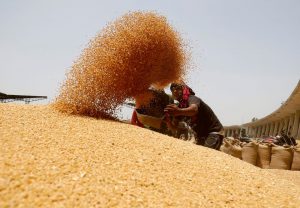The corona welfare package is largely aimed at the rural poor, but it is the economically vulnerable in the urban centres who will need a lot of support

By Avinash Kishore & Manavi Gupta
While rural India is poorer than its urban counterpart, in the COVID-19 crisis, it is the urban poor who are far more vulnerable with less social and government support. India’s 21-day lockdown is a significantly bigger shock to the economy, and will hurt urban families far more for the following five reasons.RELATED NEWS
First, the shutdown will have a bigger impact in urban areas due to the much larger economic activity here. More than two-thirds of India’s GDP comes from its towns and cities.
Second, in rural areas where agriculture is still the mainstay, this is the harvest season—the season of plenty. In villages, 55% of working men and 73% of working women are farmers or farm labourers, and this is a busy period for them. If the imposition of lockdown by local officials does not interrupt field operations, a bumper winter rabi harvest is expected. There will be work and wages, in cash or kind, for both farm labourers and farmers.
On the other hand, in cities, all business operations—building & construction, factories, markets, etc—have been stopped. Of the estimated 107 million urban workers, 41 million were self-employed, 16 million were casual workers, and 50 million were salaried employees. The self-employed are losing money and casual workers have no work in this lockdown. Even salaried workers are facing job insecurities. More than half, or 52.8%, are not entitled to paid leave while 72.4% work without written contracts. More than 80% of all urban workers will have reduced incomes during the lockdown.
Third, even as incomes go down, many expenses in cities cannot be avoided or deferred. The first, of-course, is food. Food accounts for 41% of the average monthly expenditure for urban households. That number is even higher for poorer households. Urban food systems are under greater stress during this time. Though, the government has permitted the free movement of food and other essential goods, the message has not reached local officials who are stopping and harassing trucks and local carts, transporting and selling food.
Wholesale agricultural markets (mandis), which are critical to India’s food supply chains, have been closed. Mandis connect farmers to their consumers—this is where the produce of thousands of farmers is aggregated and then sold to the local retailers, processors and traders in other parts of India. Even if the movement of agricultural commodities is allowed, India’s food supply chain will not work until mandis are open for business.
Disruptions in food transport and wholesale markets have created a fear of scarcity. Urban households and traders are both simultaneously hoarding food creating greater problems for the daily wage workers and other poor families who earn and spend every day.
Apart from food, there are other unavoidable expenses too. The Reserve Bank of India (RBI) has allowed deferment of EMIs for home and auto-loans for three months, but people must pay school fees, house rents, utility bills (electricity, gas, phone, etc), and insurance premiums. These subscription expenditures are higher in urban areas and account for 10-12% of the average monthly household expenditure for urban families. Not paying them regularly is not an option, at least not yet.
Fourth, India’s social safety net programmes focus largely on rural areas. This is for a good reason—there are far more poor people and greater deprivation in rural India. However, in the coming months, transient poverty will rise sharply in urban areas and millions of families, who are normally not covered by most public safety net programmes, will need immediate support. Living in densely populated slums with low access to clean water greatly increases their exposure to the virus, which may cause a spike in health expenses as well.
On March 25, the finance minister of India announced a Rs 1.7 lakh crore ($22 billion) special scheme called the Pradhan Mantri Garib Kalyan Yojana (PMGKY) to support poor families and businesses during the Covid-19 related economic crisis. The provision of 5 kg extra rice or wheat/person/month from the public distribution system (PDS) for the next three months is a major component of this scheme. Cash transfers to farmland owners, poor senior citizens, and women Jan Dhan account holders; higher wages to MGNREGS workers; free LPG cylinders to Ujjwala beneficiaries; and larger collateral-free loans to SHGs are the other key components of this scheme. However, 50% of urban households do not qualify for subsidised ration from the PDS and most of the other provisions for the PMGKY scheme cover only rural or BPL households. The relaxing of regulations for withdrawals from Employee Provident Fund (EPF) accounts, also a part of the PMGKY package, will benefit only 10.6% of the salaried employees. The other 90% do not have EPF accounts.
More than 80% of urban families may suffer significant income losses during this crisis and become garib (poor) at least temporarily. We need a more inclusive PMGKY to also cover these newly impoverished families.
Finally, in cities, the poor, the migrant workers, and dalits have weaker access to social and family networks that can help them tide over this period of reduced incomes, restrictions on movement, anxiety, stress, and uncertainty—through loans, barter, and moral support.
This week, the US Federal government approved a $2 trillion stimulus package to support the economy battered by the Covid-19 pandemic. This is nearly 10% of the US GDP and more than 50% of its annual federal budget. In comparison, the PMGKY has earmarked less than 1% of India’s GDP and about 5% of the Centre’s annual budget to support families and businesses fight the economic downturn. Fiscal constraints notwithstanding, India urgently needs a bigger stimulus to revive its economy.
Source:.Financial express
Link:https://www.financialexpress.com/opinion/the-coronavirus-lockdown-and-indias-urban-vulnerables/1915316/



